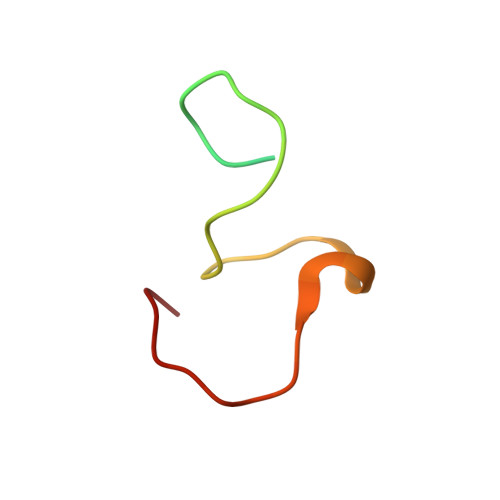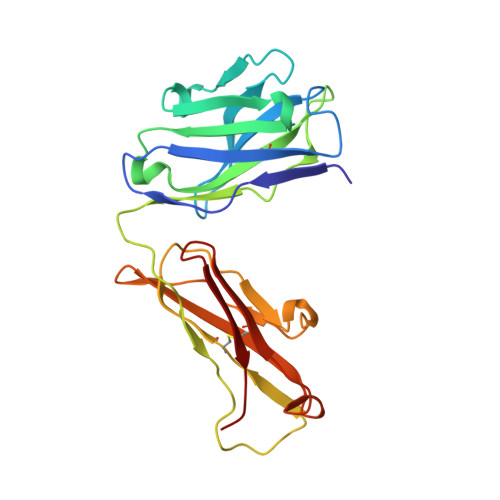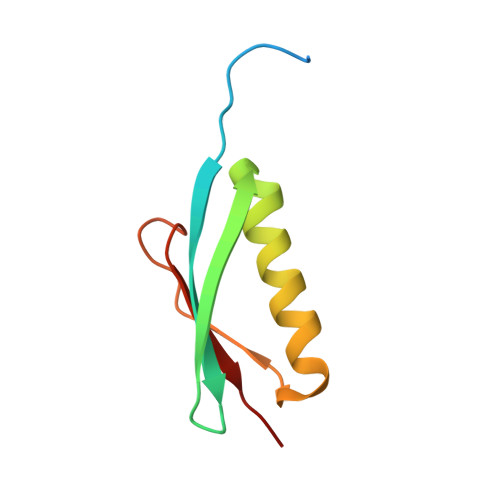Different crystal packing in Fab-protein L semi-disordered peptide complex.
Menez, R., Housden, N.G., Harrison, S., Jolivet-Reynaud, C., Gore, M.G., Stura, E.A.(2005) Acta Crystallogr D Biol Crystallogr 61: 744-749
- PubMed: 15930632
- DOI: https://doi.org/10.1107/S0907444905006724
- Primary Citation of Related Structures:
1XCQ, 1XCT, 1XF5 - PubMed Abstract:
Proteins and peptides with variable degrees of disorder are a challenge for protein crystallization. These may be completely disordered or just contain regions with a high degree of mobility that may be represented by a multitude of discretely defined conformations. These difficulties are not insurmountable, but it may be unreasonable to expect a clean result from a structural point of view. The complex between a murine monoclonal antibody (19D9D6) and a synthetic peptide that encompasses the first 45 residues of the core protein of Hepatitis C virus that is poorly structured in solution has been crystallized. In order to make the crystallization possible, use was made of a single immunoglobulin-binding domain of protein L from Peptostreptococcus magnus (PpL), a bacterial protein that can bind the variable region (Fv) of a large population of antibodies through its light chain with no interference with antibody-antigen recognition. Crystals were obtained in different space groups where the size of the cavity that accommodates the peptide is different, although many of the crystal contacts and the overall lattice are preserved. The peptide can be considered to be semi-disordered and the larger cavity accommodates a better ordered peptide than the smaller one. The lattice is of interest for the design of a scaffold system for the crystallization of peptide-tagged proteins since a cavity that accommodates a disordered entity might be able to host ordered proteins of the same size and shape as the cavity. Here, the differences between the lattices formed by this trimolecular complex are described and it is discussed how such a system may be adapted to the crystallization of peptide-tagged proteins.
Organizational Affiliation:
Département R&D Immuno-essais et Protéomique, BioMerieux, Marcy l'Etoile, France.

















